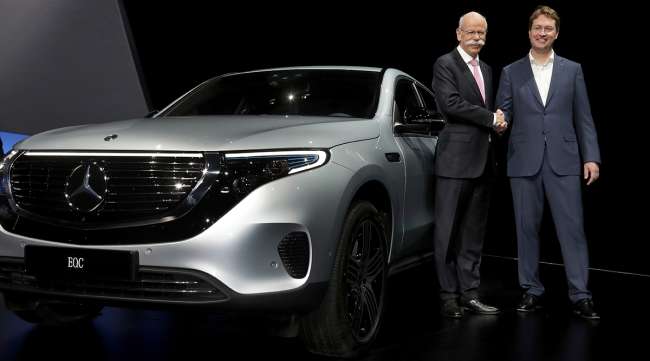Senior Reporter
Daimler Posts 2Q Loss on Higher Revenue

[Stay on top of transportation news: Get TTNews in your inbox.]
Daimler AG outlined a series of moves to return to profitability after posting a net loss in the second quarter, particularly at its largest division, Mercedes-Benz cars.
Global truck sales increased slightly, however, lifting overall revenue.
For the period ended June 30, Daimler (reporting in euros) had the equivalent of a net loss of $1.4 billion, or $1.35 per diluted share, compared with net profit of $2 billion, or $1.79, a year ago.
The results of our respective divisions. #Daimler $DDAIF pic.twitter.com/izL1CHkbCY — Daimler AG (@Daimler) July 24, 2019
Revenue increased 5% to $47.4 billion compared with $45.3 billion a year earlier.
Sales of Daimler Trucks worldwide increased 2% to 126,474 vehicles compared with 123,910 the same period a year ago.
But orders plunged 33% to 96,190 compared with 143,963 while production and retail sales slipped too, down 1% each. Production was 127,224 units compared with 128,255 in the year-ago quarter; and sales were 121,748 units compared with 123,260.
The truck division — Daimler’s second-largest — posted earnings before interest and taxes of $808 million compared with $609 million in the 2018 period.
Revenue at the truck division hit $11.6 billion, a rise of 14% from $10.2 billion a year earlier.
In general, we are intensifying the group-wide performance programs and reviewing our product portfolio in order to safeguard future success. At the same time, we are continuing consistently our company transformation.
Ola Kallenius, Daimler chairman
“Our second-quarter results were mainly impacted by exceptional items of 4.2 billion euros [$4.7 billion]. Therefore, our focus for the second half of this year is on improving our operating performance and cash-flow generation,” said Ola Källenius, Daimler chairman and head of Mercedes-Benz Cars. “In general, we are intensifying the groupwide performance programs and reviewing our product portfolio in order to safeguard future success.”
Källenius asked for patience, and on a call with analysts July 24 said Daimler would provide details later this year.
It has been a humbling start for Källenius, who joined the company in 1993 and was appointed to serve as chairman until 2024. Daimler expects profit for some items to be significantly lower than a year ago due to weaker markets, delays on rolling out upgraded models and higher provisions, including the fallout from diesel-emissions investigations, according to Bloomberg.
In the United States truck sales were a bright spot, climbing 11% to 41,498, the highest volume globally.
.@Daimler Trucks in Q2/2019:
Sales slightly increased to 126,474 trucks (+2%)
Revenue growth of 14 %
EBIT of € 725 million significantly above prior year (+33%)
https://t.co/8njoU4osVQ #Daimler $DDAIF #DaimlerTrucks pic.twitter.com/pNdRlZ1H53 — Daimler Trucks & Buses (@DaimlerTruckBus) July 24, 2019
But U.S. orders tumbled 55% to 23,589 compared with 52,388 a year earlier.
Martin Daum, head of Daimler’s truck and bus unit, said during the earnings call the lower orders in the quarter were a return to traditional ordering patterns.
“You have to highlight that 2018 was a very unusual year in North America,” Daum said. “So we are now back to a normal season that the majority of the orders will come in third quarter and fourth quarter, so we are back to normal year. We have very strong and solid order backlog that provides a good visibility for the second half of the year. So we feel confident for that period.”
In the quarter, sales of Mercedes-Benz cars dropped 3% to 575,639 compared with 590,690 a year earlier.
For the six-month period net profit plummeted to $1 billion, or 80 cents, compared with $4.7 billion or $4.17 a year earlier.
Revenue was $91.7 billion compared with $89.7 billion in the 2018 period.
A day ahead of its second-quarter earnings release, Daimler AG announced Beijing Automotive Group Co. Ltd. acquired a 5% stake in the company.
The cost of the transaction was not immediately disclosed.





